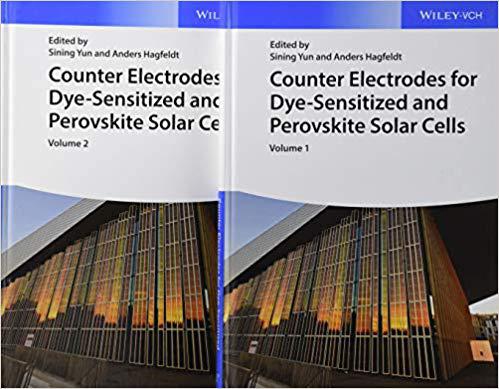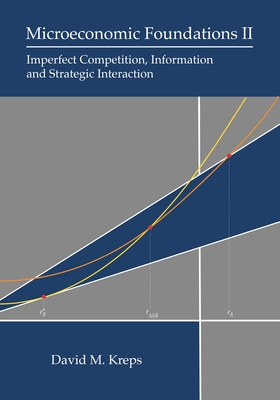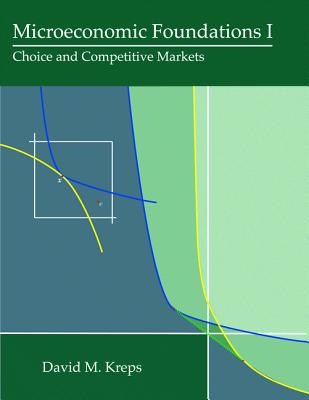图书简介
A guide to one of the most important aspects for affordable and highly efficient dye-sensitized solar cells Dye-sensitized solar cells have the potential to be one of the most promising photovoltaic technologies for production of renewable and clean energy.
Volume 1 Preface xi About the Editors xiii 1 Counter Electrode Catalysts in Dye-Sensitized Solar Cells - An Overview 1 Sining Yun 1.1 History and Cell Efficiency Level of DSSCs 1 1.2 Fabrication Techniques of a DSSC and a Symmetrical Dummy Cell 3 1.3 Operating Principle of DSSCs 5 1.4 Operating Principle of a Counter Electrode in DSSCs 6 1.5 Types and Advances in Counter Electrodes in DSSCs 7 1.6 General Design Consideration of this Book 15 Acknowledgments 16 References 16 2 Pt Electrocatalysts for I-Mediated Dye-Sensitized Solar Cells 27 Jayaraman Theerthagiri and Jagannathan Madhavan 2.1 Introduction 27 2.2 Working Principles of DSSCs and Origin of Pt CE Activity 29 2.3 Platinum Counter Electrode Materials 29 2.4 Platinum-Based Composite Counter Electrode Materials 34 2.5 Stability of Pt-Based CE in I-Mediated Electrolytes 41 2.6 Scope for Further Research 42 2.7 Conclusions 43 Acknowledgments 43 References 43 3 Metal and Alloy for CE Catalysts in Dye-Sensitized Solar Cells 47 Jialong Duan and Qunwei Tang 3.1 Introduction 47 3.2 Metal Counter Electrodes 48 3.3 Alloy Counter Electrodes 49 3.4 PreparationMethods of Alloy Counter Electrodes 60 3.5 The Basic Principles to Prepare Alloy Counter Electrodes 62 3.6 Summary and Perspective 63 Acknowledgments 64 References 64 4 Counter Electrodes in DSSCs Based on Carbon Derived from Edible Sources 71 Rahul Kumar and Parag Bhargava 4.1 Introduction 71 4.2 Electrochemistry of Carbon 72 4.3 Performance of DSSCs with Counter Electrodes Based on Various Forms of Carbon 73 4.4 Carbon from Edible Precursors 74 4.5 Fabrication of DSSCs 74 4.6 Characterization 77 4.7 Structure Analysis of the Carbon Derived from Edible Precursors 78 4.8 Cyclic Voltammetry of Counter Electrodes 82 4.9 Photocurrent-Voltage Characteristics of DSSCs Fabricated Using Carbon Derived from Edible Precursors and Platinum 85 4.10 Summary 88 Acknowledgments 88 References 88 5 Carbon Nanotube Electrocatalysts for I-Mediated Dye-Sensitized Solar Cells 93 K.S. Anuratha and J.-Y. Lin 5.1 Introduction 93 5.2 Carbon-Derived Materials 93 5.3 Features of CNTs 95 5.4 Counter Electrode Application of CNTs in DSSCs 96 5.5 Conclusions 114 References 114 6 Graphene Electrocatalysts for I-Mediated Dye-Sensitized Solar Cells 123 Ladislav Kavan 6.1 Introduction 123 6.2 Counter Electrodes in I-Mediated DSSCs: Fundamentals 123 6.3 Graphene Electrocatalysts for Triiodide Reduction 129 6.4 Conclusions 143 Acknowledgment 143 Abbreviations 143 References 144 7 Transition Metal Compound Electrocatalysts for I-Mediated Dye-Sensitized Solar Cells 155 MingxingWu and Tingli Ma 7.1 Introduction 155 7.2 Transition Metal Compound Counter Electrode Catalysts for Iodide Redox Couple in DSSCs 156 7.3 Conclusion and Perspectives 170 Acknowledgments 170 References 170 8 Conductive Polymer Based Electrocatalysts for I-Mediated Dye-Sensitized Solar Cells 177 Manuel Salado, Samrana Kazim, and Shahzada Ahmad 8.1 Introduction 177 8.2 Nanoporous Electroactive Polymers as Counter Electrodes in DSSCs 179 8.3 Main Affecting Parameters for High Performance of Polymer Counter Electrodes 186 8.4 New Routes to Improve the Performance of Polymer Counter Electrodes 187 8.5 Summary and Conclusions 189 References 189 9 Pt-Loaded Composite Electrocatalysts for I-Mediated Dye-Sensitized Solar Cells 197 Van-Duong Dao, Liudmila L. Larina, and Ho-Suk Choi 9.1 Introduction 197 9.2 Pt-Loaded Composite CEs 200 9.3 Conclusions and Outlook 224 Acknowledgments 225 References 225 10 TMCs/Polymer Composite Electrocatalysts for I-Mediated Dye-Sensitized Solar Cells 231 Sudhagar Pitchaimuthu, Raman Vedarajan, K.L. Vincent Joseph, and Yong Soo Kang 10.1 Introduction 231 10.2 Theory 233 10.3 Polymer Counter Electrode in DSSCs 233 10.4 TMC Counter Electrode in DSSCs 237 10.5 Polymer/TMC Composite Electrodes in DSSCs: Recent Strategies 241 10.6 Conclusions 257 Acknowledgment 258 References 258 11 Carbon/Polymer Composite Electrocatalysts for the Counter Electrode of Dye-Sensitized Solar Cells 263 Wenbo Sun, Rui Chen, Zhuang Xiong, Shizhe (Scott) Ouyang, Kuan Sun, and Jianyong Ouyang 11.1 Introduction 263 11.2 Conductive Polymers 263 11.3 Carbon Materials 270 11.4 Composites as the CE in DSSCs 276 11.5 Summary and Outlook 282 Acknowledgments 283 References 283 Volume 2 Preface xi About the Editors xiii 12 Carbon/Transition Metal Compound/Polymer Composite Electrocatalysts for I-Mediated Dye-Sensitized Solar Cells 295 Hyunwoong Seo 12.1 Introduction 295 12.2 Hybrid Electrocatalysts Based on Carbon, Transition Metal Compound, and Polymer 295 12.3 Hybrid Electrocatalysts Based on Carbon and Transition Metal Compound 298 12.4 Hybrid Electrocatalysts Based on Transition Metal Compound and Polymer 306 12.5 Hybrid Electrocatalysts Based on Carbon and Polymer 311 12.6 Other Hybrid Electrocatalysts 312 12.7 Stability Issue of Pt-Free Electrocatalysts 314 12.8 Concluding Remarks 318 References 318 13 Polycomponent Electrocatalysts for I-Mediated Dye-Sensitized Solar Cells 323 Meidan Ye, Qun Liu, James Iocozzia, Xiaodan Hong, Xiangyang Liu, and Zhiqun Lin 13.1 Introduction 323 13.2 Electrochemical Analysis Methods for Counter Electrodes 324 13.3 Polycomponent-Based Counter Electrode Materials 329 13.4 Conclusion and Outlook 343 Acknowledgments 345 References 345 14 Cu Complex Redox Couples Open Up New Possibilities for Dye-Sensitized Solar Cells 349 Nikolaos Vlachopoulos,Marina Freitag, and Anders Hagfeldt 14.1 Introduction 349 14.2 Overview of Current Status and Operational Principles 350 14.3 Electrochemical Properties of Cu Complexes - Basic Concepts 352 14.4 Solar Cell Device Performance 359 14.5 Cu-complex-Based Solid-State DSSC - \"Zombie Cells\" 362 14.6 Future Outlook 363 References 364 15 Electrocatalysts for T-Mediated Dye-Sensitized Solar Cells 367 Feng Hao and Hong Lin 15.1 Introduction 367 15.2 Thiolate(T)-Based Redox Couples 368 15.3 Inorganic Transition Metal Compounds 371 15.4 Organic Conductive Polymers 375 15.5 Carbonaceous Materials 379 15.6 Conclusions and Outlook 385 Acknowledgment 387 References 387 16 Stability Assessment Strategy for Counter Electrode Catalysts of Dye-Sensitized Solar Cells 395 Sining Yun and Peter D. Lund 16.1 Background 395 16.2 Present Stability Assessment for CE Catalysts in DSSCs 396 16.3 Target Values for Stability Assessment of CE Catalysts 399 16.4 Road Map or Stability Assessment of CE Catalysts in DSSCs 399 16.5 Some Examples for Stability Assessment of CE Catalysts 403 16.6 Remarks 412 Acknowledgments 413 References 413 17 Metal Counter Electrodes for Perovskite Solar Cells 421 Alexander R. Uhl 17.1 Perovskite Solar Cells - Short History and typical Architectures 421 17.2 Metal Counter Electrodes 422 17.3 Gold Electrodes 424 17.4 Silver Electrodes 428 17.5 Silver Nanowire Electrodes 436 17.6 Aluminum Electrodes 438 17.7 Copper Electrodes 441 17.8 Nickel Electrodes 443 17.9 Chromium Electrodes 443 17.10 Calcium Electrodes 444 17.11 Titanium Electrodes 444 17.12 Stainless Steel Electrodes 445 17.13 Metal Alloy Contacts 445 17.14 Summary 446 References 447 18 Carbon Counter Electrodes for Dye-Sensitized and Perovskite Solar Cells 457 Seigo Ito and Ajay Kumar Baranwal 18.1 Introduction 457 18.2 Carbon Electrodes for Dye-Sensitized Solar Cells 458 18.3 Carbon Electrodes for Perovskite Solar Cells 463 References 482 19 First-Principles DFT Calculations for Perovskite Solar Cells 487 Jing Shi and Sining Yun 19.1 Introduction 487 19.2 Crystal Structures 488 19.3 Structure Modeling in DFT Calculations 489 19.4 First-Principles Calculations for Electronic Properties 490 19.5 First-Principles Calculations for Defects 494 19.6 Ferroelectric Properties 498 19.7 Conclusions and Outlook 503 References 504 20 Boundary Engineering of Counter Electrodes for Dye-Sensitized and Perovskite Solar Cells 511 Ludmila Cojocaru and Satoshi Uchida 20.1 Boundary Modeling of Perovskite Solar Cells 511 20.2 The Device Capacitance of Dye-Sensitized Solar Cells and Perovskite Solar Cells 517 20.3 Results and Discussion 519 20.4 Methods 525 20.4.1 Device Preparation 525 20.4.2 Device Evaluation 525 References 526 Appendix A: Cell Efficiency Table of DSSCs with Various Counter Electrode Electrocatalysts 531 Xiao Zhou, ChenWang, Yangliang Zhang,Wen Fang, Yuzhi Hou, Chen Zhang, XiaodongWang, and Sining Yun Abbreviations 574 References 576 Index 619
Trade Policy 买家须知
- 关于产品:
- ● 正版保障:本网站隶属于中国国际图书贸易集团公司,确保所有图书都是100%正版。
- ● 环保纸张:进口图书大多使用的都是环保轻型张,颜色偏黄,重量比较轻。
- ● 毛边版:即书翻页的地方,故意做成了参差不齐的样子,一般为精装版,更具收藏价值。
关于退换货:- 由于预订产品的特殊性,采购订单正式发订后,买方不得无故取消全部或部分产品的订购。
- 由于进口图书的特殊性,发生以下情况的,请直接拒收货物,由快递返回:
- ● 外包装破损/发错货/少发货/图书外观破损/图书配件不全(例如:光盘等)
并请在工作日通过电话400-008-1110联系我们。
- 签收后,如发生以下情况,请在签收后的5个工作日内联系客服办理退换货:
- ● 缺页/错页/错印/脱线
关于发货时间:- 一般情况下:
- ●【现货】 下单后48小时内由北京(库房)发出快递。
- ●【预订】【预售】下单后国外发货,到货时间预计5-8周左右,店铺默认中通快递,如需顺丰快递邮费到付。
- ● 需要开具发票的客户,发货时间可能在上述基础上再延后1-2个工作日(紧急发票需求,请联系010-68433105/3213);
- ● 如遇其他特殊原因,对发货时间有影响的,我们会第一时间在网站公告,敬请留意。
关于到货时间:- 由于进口图书入境入库后,都是委托第三方快递发货,所以我们只能保证在规定时间内发出,但无法为您保证确切的到货时间。
- ● 主要城市一般2-4天
- ● 偏远地区一般4-7天
关于接听咨询电话的时间:- 010-68433105/3213正常接听咨询电话的时间为:周一至周五上午8:30~下午5:00,周六、日及法定节假日休息,将无法接听来电,敬请谅解。
- 其它时间您也可以通过邮件联系我们:customer@readgo.cn,工作日会优先处理。
关于快递:- ● 已付款订单:主要由中通、宅急送负责派送,订单进度查询请拨打010-68433105/3213。
本书暂无推荐
本书暂无推荐















